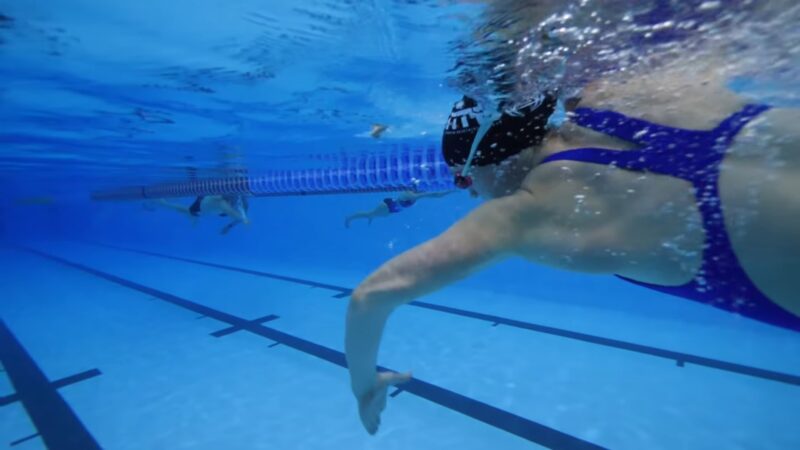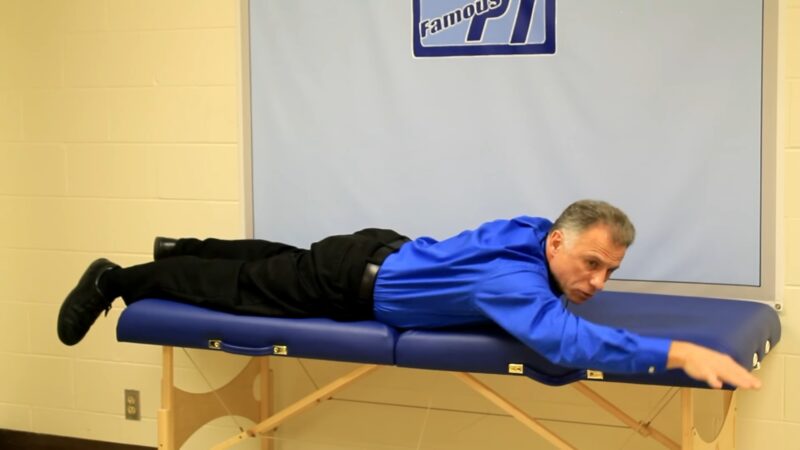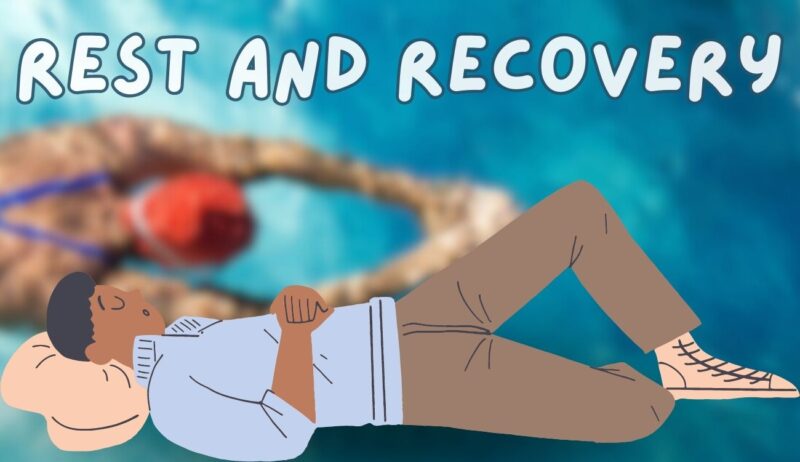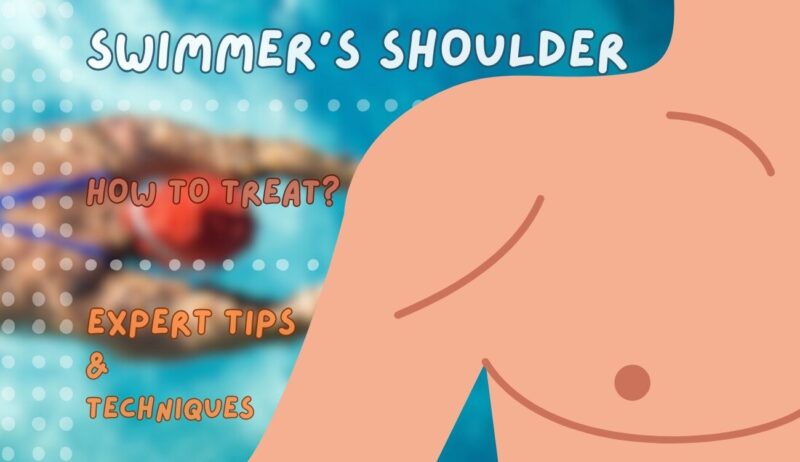Swimmer’s shoulder is a common ailment in aquatic athletes, characterized by shoulder discomfort or pain during movement. Prolonged repetitive motion, such as the freestyle stroke, can result in this issue. This blog post will guide you through understanding and treating swimmer’s shoulder with practical and accessible methods.
A Brief Overview
Swimmer’s shoulder is a term used to describe a variety of shoulder injuries that occur due to overuse or improper stroke techniques in swimming. It is most common in swimmers due to the frequent, repetitive overhead motions involved in the sport. Typical symptoms include pain, inflammation, and reduced shoulder mobility.
Swimmer’s shoulder can range from mild irritation to severe inflammation of the shoulder tendons. It primarily affects the rotator cuff, a group of muscles and tendons that secure your arm within the shoulder joint. Understanding this condition is the first step in effectively treating it.
Recognizing the Symptoms

The most common symptom of a swimmer’s shoulder is pain, especially when lifting your arm overhead or while sleeping. You may also experience a reduced range of motion and shoulder strength, impacting your swimming efficiency and performance.
Another common sign of a swimmer’s shoulder is a dull ache that extends from the shoulder to the upper arm. This pain may increase with specific movements or exercises. If you experience any of these symptoms, it is crucial to promptly seek medical attention to avoid further damage.
Causes and Risk Factors
Swimmer’s shoulder is typically caused by overuse, poor swimming technique, or inadequate rest between workouts. The continual strain on the shoulder can lead to inflammation and pain.
Risk factors for swimmer’s shoulder include:
- High training volumes
- Inadequate rest periods
- Poor swimming mechanics
- Previous shoulder injuries
Understanding these factors can help to prevent the onset of a swimmer’s shoulder and assist in forming an effective recovery plan.
Prevention Strategies
Prevention is always better than cure. Incorporating preventative strategies in your swimming routine can significantly reduce the risk of developing swimmer’s shoulder.
- Regular strength and flexibility exercises: These can enhance muscle balance and joint mobility, thus preventing excessive strain on the shoulder.
- Proper technique: A coach can help identify and correct any technical issues in your stroke.
- Adequate rest: Ensure you are getting enough rest between workouts to allow your body to recover.
Within the journey of treating your swimmer’s shoulder, it’s equally important to understand your body’s limits and capacities. Incorporating fundamental principles of endurance training can not only help you recover faster but can also propel you to new heights in your sporting pursuits. Unlocking your performance potential across swimming, cycling, and running could be the missing key to your rehabilitation process and future success.
Diagnostic Procedures
A healthcare professional will typically conduct a physical examination to diagnose the swimmer’s shoulder. They may assess your pain levels and range of motion and look for any signs of inflammation.
Imaging tests, like an MRI or ultrasound, might be required for a detailed view of the shoulder structure. These help identify any abnormalities or inflammation in the shoulder joint and surrounding tissues. A timely diagnosis can expedite the recovery process.
Non-Surgical Treatment Options
Non-surgical treatment is often the first line of defense against a swimmer’s shoulder. This approach primarily includes the following:
- Rest: Taking a break from swimming can provide relief by reducing inflammation and stress on the shoulder joint.
- Physical therapy: Targeted exercises can improve strength, flexibility, and posture, facilitating recovery.
- Medication: Nonsteroidal anti-inflammatory drugs (NSAIDs) can help manage pain and reduce inflammation.
Physical Therapy and Rehabilitation

Physical therapy is a cornerstone in the treatment of swimmer’s shoulder. It includes strengthening exercises for the rotator cuff and scapular muscles and improving flexibility and range of motion.
Rehabilitation programs often include:
- Stretching exercises
- Resistance training
- Posture correction
- Aquatic therapy
A physical therapist can provide a personalized rehabilitation plan based on your unique needs and recovery goals.
Surgical Treatment Options
If non-surgical treatments are unsuccessful, surgery might be considered. Surgical options include arthroscopy, in which a small camera is used to examine and repair shoulder structures, and open surgery for more complex cases.
Surgical interventions aim to repair damaged structures, alleviate pain, and restore shoulder function. It’s crucial to follow postoperative care instructions and engage in rehabilitation exercises for optimal recovery.
Nutrition for Recovery

Nutrition plays a significant role in healing and recovery. Certain foods and nutrients can enhance the body’s ability to repair itself and reduce inflammation.
- Protein: Aids in tissue repair and muscle recovery
- Omega-3 fatty acids: Found in fish and flaxseeds, can help reduce inflammation
- Antioxidants: Foods rich in vitamins C and E can help protect cells from damage
Returning to Swimming
Returning to swimming post- swimmer’s shoulder should be gradual and supervised. Begin with light, low-impact exercises and gradually increase the intensity as your shoulder strength and mobility improve.
Your return to swimming should be guided by:
- Your pain levels
- Your strength and mobility progress
- Guidance from your healthcare provider
The Role of a Support System
Recovering from a swimmer’s shoulder isn’t a solo journey. Family, friends, coaches, and healthcare providers make up a vital support system that can provide emotional encouragement, practical assistance, and medical guidance.
Rely on your support system during your recovery. They can help you stay motivated, adhere to your treatment plan, and provide comfort during challenging times.
Mental Health and Coping Strategies

Dealing with an injury can be challenging, both physically and emotionally. It’s important to maintain a positive mindset throughout your recovery journey.
Engage in relaxation techniques like deep breathing and meditation. Stay connected with your swimming community for moral support. Reach out to a mental health professional if you’re struggling emotionally.
Long-Term Management of Swimmer’s Shoulder
Long-term management of a swimmer’s shoulder involves integrating preventative strategies into your daily routine. Regular strength training, proper swimming technique, and a balanced diet can go a long way in maintaining shoulder health.
Additionally, regular check-ups with your healthcare provider can help monitor your shoulder health and adjust your training and recovery programs as needed.
Importance of a Good Swimming Technique
In addition to physical conditioning, a good swimming technique is vital in preventing swimmer’s shoulder. Poor swimming mechanics can place unnecessary stress on the shoulder joint and potentially lead to injury. Coaches can provide essential guidance and corrections to your form to ensure you’re swimming in a way that minimizes the risk to your shoulder.
Key points to consider include:
- Avoiding overreaching or cross-body movements during the freestyle stroke
- Ensuring a good body roll to decrease the need for shoulder joint hyperextension
- Balancing the use of the upper body and lower body during strokes
The Role of Equipment
Using the right swimming equipment can also play a role in preventing and managing the swimmer’s shoulder. Equipment such as hand paddles, pull buoys, and kickboards can alter the dynamics of your swim, emphasizing different muscle groups and allowing others to rest.
Swimming pools can help:
- Build strength: Hand paddles can help develop upper body strength.
- Improve technique: Fins can correct the kicking technique and improve body positioning in the water.
- Offer variety: Kickboards and pull buoys can add variety to your workout, helping to prevent overuse injuries.
The Role of Rest and Recovery

Finally, the role of rest in preventing and treating swimmer’s shoulder cannot be overstated. Overtraining without adequate rest can lead to muscle fatigue, increasing the risk of injury. Therefore, integrating rest days into your training regimen and getting sufficient sleep can greatly improve your body’s ability to heal and strengthen.
Incorporate these tips into your rest and recovery routine:
- Schedule regular rest days in your training plan.
- Ensure you’re getting enough sleep each night.
- Utilize active recovery techniques such as light swimming or stretching on your rest days.
The Importance of Self-awareness
In the end, one of the most crucial aspects of preventing and treating a swimmer’s shoulder is self-awareness. Listening to your body, recognizing the early signs of the swimmer’s shoulder, and seeking prompt treatment can significantly improve recovery outcomes.
Remember to:
- Monitor your body for any signs of discomfort or fatigue during and after swimming.
- Respond promptly to any signs of injury or distress in your body.
- Regularly check in with your healthcare provider to discuss any concerns or changes in your condition.
Final Thoughts
Swimmer’s shoulder, while common, is a manageable condition with the right knowledge and approach. By understanding its causes, implementing preventive strategies, and following appropriate treatment options, you can navigate your recovery effectively.
Remember, every swimmer’s journey with a swimmer’s shoulder is unique. Always seek personalized advice from a healthcare provider to ensure your treatment and recovery plan is tailored to your specific needs.

